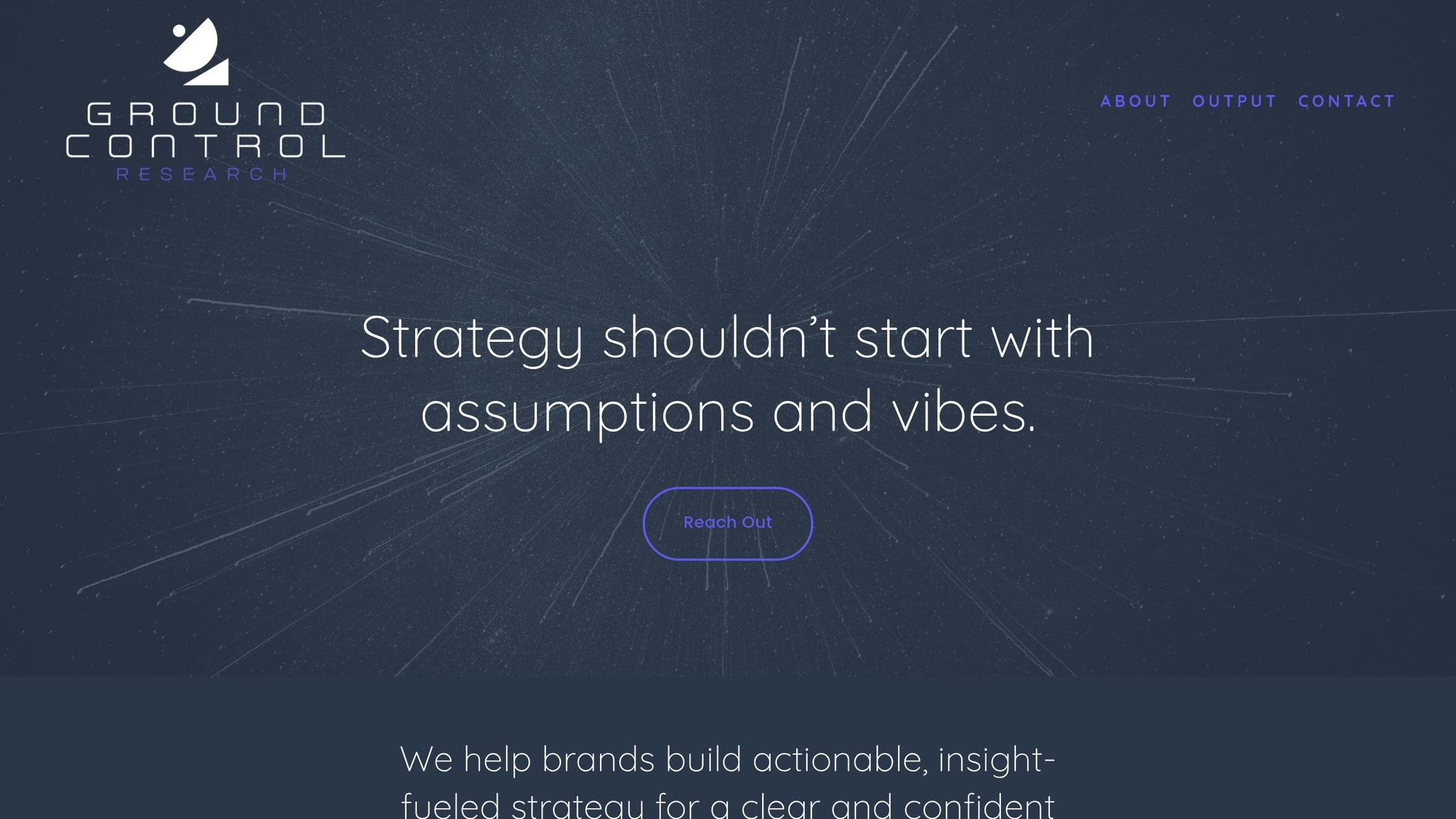How AI-Powered Market Research Drives Smarter Marketing Strategies
In the ever-evolving world of B2B marketing and business strategy, leveraging AI for market research is no longer an option – it’s a competitive necessity. Businesses today face mounting pressures to improve ROI, refine customer targeting, and craft strategies with measurable outcomes. The introduction of AI into this process is transforming how companies uncover insights and make data-driven decisions, as discussed in an insightful conversation between Guy Powell and Anastasia Laski, founder of Ground Control Research.
This article unpacks their discussion, exploring how AI-powered methodologies, like Ground Control’s Telemetry service, are helping businesses sharpen their strategies, accelerate growth, and reduce guesswork in marketing.
The Challenge: Balancing Speed and Precision in Market Strategy
For startups and scaleups, time is both a luxury and a constraint. These companies often operate within limited funding "runways" and must generate results quickly to satisfy investors and fuel growth. However, speed can sometimes compromise precision, leading to a reliance on flawed assumptions about target markets.
Anastasia Laski highlights how this problem extends beyond startups. Even established brands often base their marketing strategies on incomplete or outdated understandings of their audiences. Misaligned customer profiles and guesswork in creative strategies can result in campaigns that miss the mark. The stakes are high, as even minor missteps can lead to wasted resources, stalled growth, and lost business opportunities.
"The biggest mistake that companies make is stopping at their current understanding of their audience", Laski explains. "They don’t step back to ask, ‘Who statistically and mathematically is the best market for our brand?’"
Ground Control Research: A Data-Driven Approach to Market Clarity

Ground Control Research, founded by Anastasia Laski, helps businesses make informed, strategic decisions based on deep consumer insights. Their proprietary service, Telemetry, leverages AI to answer two critical questions: Who is your target audience, and how do you effectively communicate with them?
Telemetry provides statistically-backed profiles of target markets, removing the guesswork and enabling businesses to "bridge the gap" between current customers and untapped audiences. This approach is particularly powerful for startups whose success often hinges on identifying and activating the right market quickly.
Key Features of Telemetry:
- Audience Identification: Pinpoints optimal target audiences using demographic, psychographic, and behavioral data.
- Data-Driven Playbooks: Builds foundational strategies based on hard data rather than assumptions.
- Efficient Testing: Reduces the need for prolonged test-and-learn cycles, allowing businesses to act faster with confidence.
"In startup environments, you don’t have 12 months to test and iterate. You need to hit the ground running", Laski emphasizes.
AI’s Role in Reshaping Market Research
AI has revolutionized marketing by accelerating research processes, improving accuracy, and enabling more nuanced insights. Laski notes that AI-powered tools are invaluable for both structuring and streamlining complex data to guide decision-making.
Ways AI Enhances Market Research:
- Rapid Data Structuring: AI can process and organize inputs (e.g., customer feedback, analytics, and hypotheses) into actionable formats.
- Hypothesis Testing: AI identifies patterns and validates assumptions, allowing marketers to make informed choices.
- Customization: AI makes it easier to tailor research methodologies to the unique needs of each business, enabling faster turnarounds without sacrificing quality.
For example, Laski uses AI-powered transcription and summarization tools to synthesize client input into structured hypotheses. This allows her team to quickly design customized research strategies, cutting down on lead times while improving results.
"AI has the power to make strategic conversations far more actionable", she says.
Moving Beyond Guesswork: Why "Gut Instinct" Isn’t Enough
A recurring theme in the conversation is the importance of moving beyond intuition in business decision-making. While founders and executives may have valuable instincts, relying solely on gut feelings can be risky, especially when scaling or entering new markets.
Common Pitfalls of Guesswork:
- Narrow Customer Assumptions: Founders often assume their early customers define their entire market.
- Mimicking Competitors: Challenger brands may try to emulate larger competitors without considering their unique value proposition.
- Misaligned Messaging: Creative strategies based on inaccurate profiles often fail to resonate with target audiences.
Instead, Laski advocates for curiosity and rigorous exploration. By asking the right questions – "What market segments hold the greatest potential?" and "What messaging will drive engagement?" – businesses can uncover opportunities they might otherwise miss.
Challenger Brands: How to Stand Out Without Playing Big
For challenger brands, the temptation to imitate larger competitors can backfire. Laski warns that these brands should focus on what makes them unique, rather than broadening their appeal too quickly.
"Big companies didn’t start by marketing to everyone. They layered one target market onto another, strategically expanding over time", Laski notes.
Instead of chasing every potential customer, challenger brands should invest in understanding their current audience and identifying adjacent opportunities. This approach not only aligns with their resources but also helps them build a meaningful and loyal customer base.
Key Takeaways
Here are the most actionable insights from the conversation:
- Start with Data, Not Assumptions: Identify your target audience using statistically-backed insights, not guesswork.
- Refine Your Messaging: Tailor your creative strategy to resonate deeply with your audience. Even small adjustments can yield exponential results.
- Leverage AI for Speed and Precision: Use AI tools to structure data, validate hypotheses, and accelerate the decision-making process.
- Bridge to Broader Audiences: When scaling, focus on adjacent market segments rather than attempting to appeal to everyone at once.
- Be a Challenger, Not a Copycat: Define your unique value proposition and build a strategy around it.
- Foster Curiosity: Encourage a culture that questions assumptions and explores innovative solutions.
- Anticipate Change: Businesses that embrace data-driven change are better positioned for growth.
The Future of Marketing Strategy
The integration of AI into market research is not just a trend – it’s a paradigm shift. As Laski and Powell discuss, businesses that prioritize data-driven insights and embrace AI’s capabilities are better equipped to navigate today’s competitive landscape.
For marketers, executives, and strategists, the message is clear: Success lies in balancing curiosity with precision, leveraging AI to uncover opportunities, and crafting strategies rooted in data. By doing so, companies can achieve not just incremental growth, but transformative results.
Source: "AI and Marketing Insights: How AI Enabled Market Research Transforms Strategy" – ProRelevant’s The Backstory on Marketing & AI, YouTube, Sep 1, 2025 – https://www.youtube.com/watch?v=gUvf2422gvI
Use: Embedded for reference. Brief quotes used for commentary/review.




